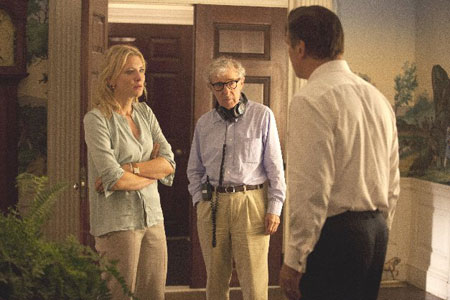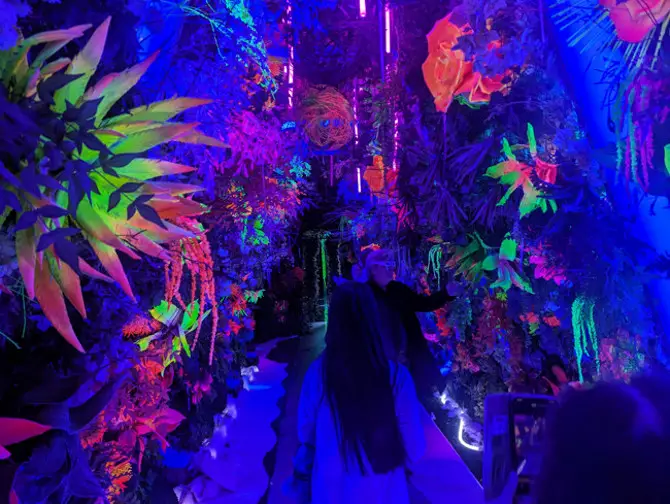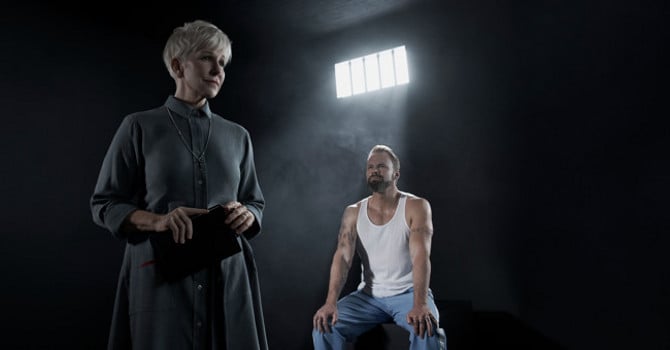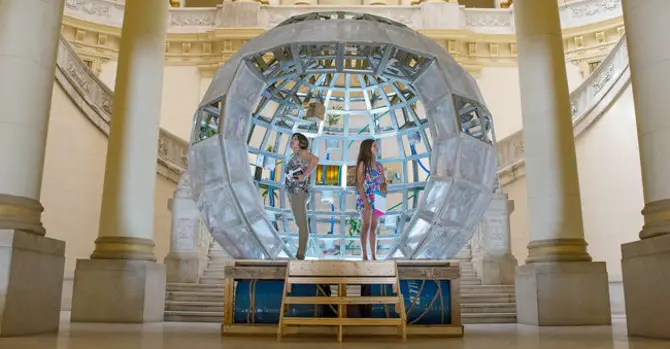Woody Allen has created indelible female characters portrayed by actresses such as Penelope Cruz, Judy Davis, Mira Farrow, Diane Keaton, Geraldine Page, Gena Rowlands, Mira Sorvino and, from a long list, the extraordinary Dianne Wiest. Now, he adds another notch to his belt: Cate Blanchett, one of the world’s most exceptional and watchable actresses. She’s that, and at least Oscar-nomination bound, for her performance in Blue Jasmine [Sony Pictures Classics], Allen’s latest art-house work, as the socialite wife in downfall as the financial bubble of great wealth her husband created on the backs of others' bursts.
Blanchett gives a raw, ugly character study as Jeanette, renamed Jasmine. Magnificently multifaceted and neurotic, Blanchett often channels her acclaimed fragile Blanche DuBois, another woman who lived for illusion and didn’t face dire facts, from the revival of Tennessee Williams' A Streetcar Named Desire (directed by Liv Ullmann, which, sadly, never made it to Broadway, but did have a 2009 SRO run at BAM). Literally based on the misdeeds of Bernie Madoff and his fall from grace, there’s high drama and more than a fair share of comic moments.
Co-star Alec Baldwin, unfortunately, doesn’t have a lot to do. The movie is really anchored by Blanchett with some exceptional bright spots from Sally Hawkins as her adopted sister living a life very different from the one Jasmine’s been forced out of. As Hawkins’ brute of a fiancé, Broadway’s Bobby Cannavale again plays Bobby Cannavale to a T – and, amazingly, excels at it.

Woody Allen on set with Cate Blanchett and Alec Baldwin
Blanchett is a five-time Oscar nominee who won for her supporting role in The Aviator, who’s been popping up more often onscreen in the last four years, even though she’s been busy co-producing with husband Andrew Upton as artistic directors at their Sydney Theater Company productions and doing her Blanche Down Under.
It seemed everything leading up to shooting Blue Jasmine was lacking in drama or angst. “I got a call from my agent saying Woody had a script he’d like me to read,” Blanchett relates. “He and I spoke about three-and-a-half minutes on the phone. I told him I’d love to read it. He sent the script and asked that I call him when I’d finished reading it. I read it straight-away. It was a page-turner. Apart from being a unique filmmaker, Woody’s a brilliant dramatist. We spoke another forty-five seconds and I started packing for San Francisco.”

Cate Blanchett and Alec Baldwin in Woody Allen's Blue Jasmine, just before the financial bubble bursts
They hadn’t met and Allen hadn’t seen her Blanche, “or, at least,” she says, “he never brought it up.” She admits that character was one she drew upon for Jasmine. It’s good she says so, because it’s often almost as if we’re watching Streetcar set today. (This also applies to Cannavale’s Chili. Hopefully, one day he’ll get to play Stanley for real.)
Given Blanchett’s stellar rep as an actress, how did Allen approach working with her? He simply says, “We met on the set. She’s a deeply committed actress – striking, bold, and unnerving. She's Cate Blanchett, what can you do? You hire her and get out of the way."
Blanchett found the shoot an exhilarating experience. “Woody’s par excellence when it comes to working together. Most of his direction is in the script. He gave me very little direction, mainly leaving me to my own devices, which is the way I’ve heard he works. We’d finish a scene and he’d say it was fine or it stunk. If the latter, he’d say, ‘Let’s try it this way.’ And we would.”
We first meet Blanchett’s New York socialite Ruth Madoff -- I mean, Jasmine -- after she’s suffered a breakdown, triggered by the collapse not only of her marriage (which we learn a lot more about in the film’s third act) to wealthy financier Bernie Madoff -- I mean, Hal (Baldwin) -- and the desertion of their son. Jasmine’s identity has been wrapped up in being an elegant, sophisticated Manhattanite living the high life. Now that that life has veered off course, she’s jet-setted first class to Frisco with a passel of LV luggage to start anew.

Sally Hawkins and Bobby Cannavale
She’s dependent on the kindness of a virtual stranger, her sister (Hawkins), a grocery store cashier she’s all but taken for granted. She descends from elite privilege to absolute rock bottom and rude awakenings. It’s a journey into the realm of the absolute unknown since Jasmine can’t let go of her long ago social status, not to mention condescending attitudes.
Blue Jasmine has things to say about class, wealth, criminal acts, and tragedy, but it’s sharpest, most cutting salvos are, according to its writer, “looking straight into the ugly conditions of the human heart, our lies, delusions, and desperate methods of coping.”
Observes Blanchett, “It’s very difficult for us to truly look at ourselves in the mirror, to see who we are warts and all—and it’s difficult to change. In the end, Jasmine’s a product of the evasion we all have to some degree. In her case, as time has passed, she’s become delusional on an epic scale, turning to alcohol and Xanax.
“Of course,” she continues, “our fantasies are always more than what we are. To look the other way is a human flaw we all share. To a certain degree we see what we want to see.”
Blanchett captures all of Jasmine’s flaws and delivers her great sense of entitlement, even though she knows her former wealth was ill-gotten, in agonizing and excruciating detail that’s not always easy to watch. Yet, at only 98 minutes, you actually wish for at least another half hour. It’s a performance that will be a Blanchett benchmark.






